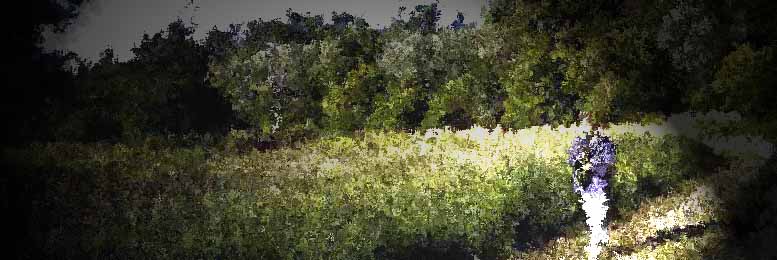27.1.2007 | 15:57
Móðuharðindi af mannavöldum
Ég verð að segja að mér þykir þessi frétt nokkuð skrýtin og skringilega orðuð.
"Zimbabwe hefur glímt við efnahagskreppu í rúm sex ár og er verðbólgan í landinu ein sú mesta í heiminum eða yfir 1200%. Jafnframt er yfir helmingur vinnufærra manna án atvinnu.", segir í fréttinni. Vissulega rétt sagt frá, en þó nokkur einföldun. Það er sömuleiðis rétt að segja að það sé hætta á hungursneyð vegna gjaldeyrisskorts, þar sem vissulega er erfitt að kaupa mat án peninga, en það er sömuleiðis ákaflega mikil einföldun í frásögn.
Líklega má segja að á Zimbabwe hafi skollið á móðuharðindi af mannavöldum. Fyrst og fremst má segja að ófremdarástandið og vargöldina megi kenna Robert Mugabe og undarlegri og afleitri efnahagsstjórn hans.
Sósalískar efnahagsaðgerðir, ógnarstjórn og spilling hafa leitt landið á barm glötunar.
Nú eru einhverjir af brottreknu bændunum á leið til baka, en líklega er það of seint
Ef menn vilja leita sér frekari upplýsinga um ástand mála er Google eins og oft áður besta lausnin, en lýsingar frá landinu eru margar skelfilegar:
"Under the weight of the general economic meltdown — the economy has shrunk by 40% since 2000 and is still contracting — the health system has collapsed and a populace now weakened by five consecutive years of near-starvation dies of things which would never have been fatal before. A staggering 42,000 women died in childbirth last year, for example, compared with fewer than 1,000 a decade ago.
A vast human cull is under way in Zimbabwe and the great majority of deaths are a direct result of deliberate government policies. Ignored by the United Nations, it is a genocide perhaps 10 times greater than Darfur’s and more than twice as large as Rwanda’s.
Genocide is not a word one should use hastily but the situation is exactly as described in the UN Convention on Genocide, which defines it as “deliberately inflicting on the group conditions of life calculated to bring about its physical destruction in whole or in part”.
Reckoning the death toll is difficult. Had demographic growth continued normally, Zimbabwe’s population would have passed 15m by 2000 and 18m by the end of 2006. But people have fled the country in enormous numbers, with 3m heading for South Africa and an estimated further 1m scattered around the world. This would suggest a current population of 14m. But even the government, which tries to make light of the issue, says that there are only 12m left in Zimbabwe.
Social scientists say that the government’s figures are clearly rigged and too high. Their own population estimates vary between 8m and 11m. But even if one accepted the government figure, 2m people are “missing”, and the real number is probably 3m or more. And all this is happening in what was, until recently, one of Africa’s most prosperous states and a member of the Commonwealth. "
"“The women suffer the most. At a certain point the men just walk away but the women are left with their children, watching them starve. We used to have universal schooling but 50% of the children are now out of school because the parents cannot afford even the smallest fees.
“Such children have no future. The only hope lies in the end of Mugabe. Some people pray for him to die but they are very scared. In any meeting of 20 people there will always be two informers.
“Mugabe is a murderer and also a traitor — he is selling the country to the Chinese. It is lonely to be the only one to say that,” Ncube says. “People tell me they pray for me but they are too frightened to speak out themselves. For myself, I shall not stop speaking out. I am perfectly willing to die.” "
"From 2000 on, it destroyed commercial agriculture because it saw the white farmers and their workers as opposition to Mugabe. This led to the first wave of killing, as some 2.25m farm-workers and their families were thrown off the farms, many after being beaten and tortured. An unknown number died. The eviction had the effect of collapsing the economy and cutting the food supply far below subsistence in every subsequent year.
What scarce food there was left, along with seeds, fertiliser, agricultural implements and every other means to life, was made dependent on possession of a Zanu-PF party card. Campaigns of terror followed in 2000 and 2002-03. The population has since been kept in a continuous state of anxiety by a series of military-style “operations”, of which Murambatsvina and Maguta are merely two particularly murderous examples."
" Gideon Gono, governor of the central bank, orders in the Green Bombers (young Zanu-PF thugs) to enforce his diktat and bakers are jailed for exceeding the subeconomic bread price set by government. In this — as in the programme for forced re-ruralisation — there are reminders of Cambodia’s Khmer Rouge.
World Health Organisation figures show that life expectancy in Zimbabwe, which was 62 in 1990, had by 2004 plummeted to 37 for men and 34 for women. These are by far the worst such figures in the world. Yet Zimbabwe does not even get onto the UN agenda: South Africa’s President Thabo Mbeki, who has covered for Mugabe from the beginning, uses his leverage to prevent discussion. How long this can go on is anyone’s guess."
Sjá greinina í heild hér.

|
Hungursneyð vofir yfir í Zimbabwe |
| Tilkynna um óviðeigandi tengingu við frétt | |
Meginflokkur: Stjórnmál og samfélag | Aukaflokkar: Bloggar, Dægurmál, Saga | Facebook

Bæta við athugasemd [Innskráning]
Ekki er lengur hægt að skrifa athugasemdir við færsluna, þar sem tímamörk á athugasemdir eru liðin.